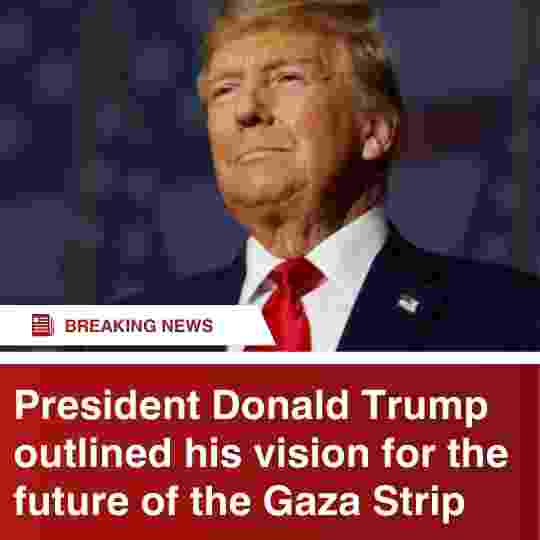In a striking announcement on Thursday, President Donald Trump outlined his vision for the future of the Gaza Strip, proposing that Israel would transfer control of the territory to the United States once active hostilities have ended. According to Trump, the plan hinges on the idea that the enclave’s population would already have been resettled into “far safer and more beautiful communities” elsewhere in the region—an approach that, he claims, would eliminate the need for U.S. troops on the ground.
Speaking on his Truth Social platform, President Trump detailed the proposal, stating
“The Gaza Strip would be turned over to the United States by Israel at the conclusion of fighting. Palestinians would have already been resettled in far safer and more beautiful communities, with new and modern homes, in the region. No soldiers by the U.S. would be needed!”
This announcement comes just a day after the global community expressed widespread condemnation of the President’s previous remarks, in which he described ambitions to transform Gaza into what he termed the “Riviera of the Middle East. Despite the international outcry, Trump’s latest comments have only further fueled debates on the future of the territory.
In response to these developments, Israeli authorities have taken significant preparatory steps. The Israeli military has been ordered to ready itself to facilitate what has been described as the “voluntary departure” of Gaza’s Palestinian residents. The move indicates a potential shift in operational strategy, aimed at mitigating prolonged conflict and reducing direct military engagement in the densely populated area.
Critics have raised concerns about the feasibility and humanitarian implications of such a sweeping plan, questioning both the logistics of resettlement and the potential for destabilizing the region further. Proponents, however, argue that the proposal could pave the way for a dramatic reconfiguration of the area, promising modern development and enhanced security once conflict ceases.
As the situation evolves, key regional players and international observers are closely monitoring the unfolding strategy. The proposal not only challenges existing norms regarding territorial governance but also raises important questions about the future role of the United States in Middle Eastern affairs.
With the prospect of a major geopolitical shift on the horizon, the coming days will be critical in determining whether Trump’s bold vision can transition from provocative rhetoric to actionable policy. For now, both supporters and detractors alike await further details and responses from the international community.

